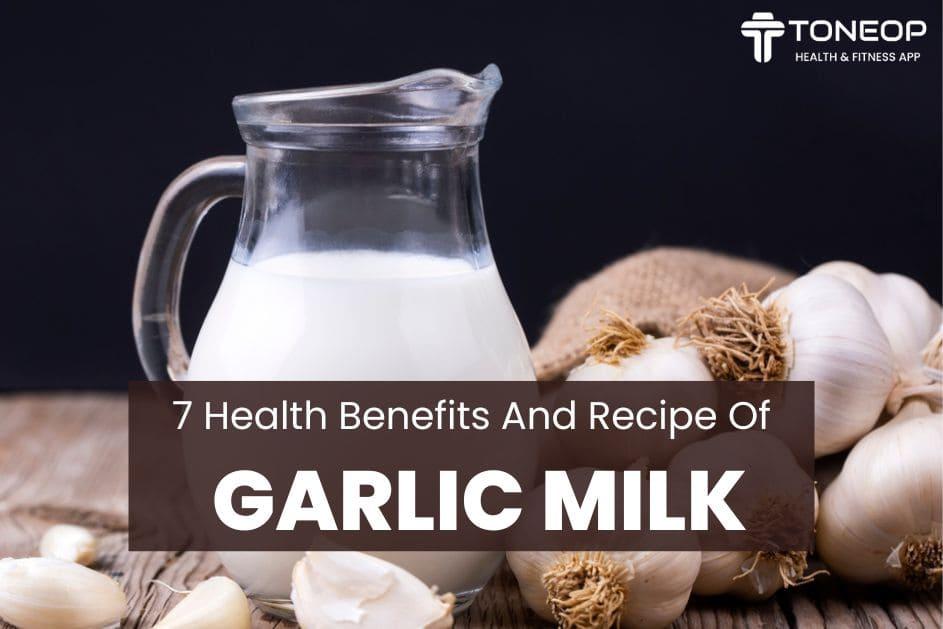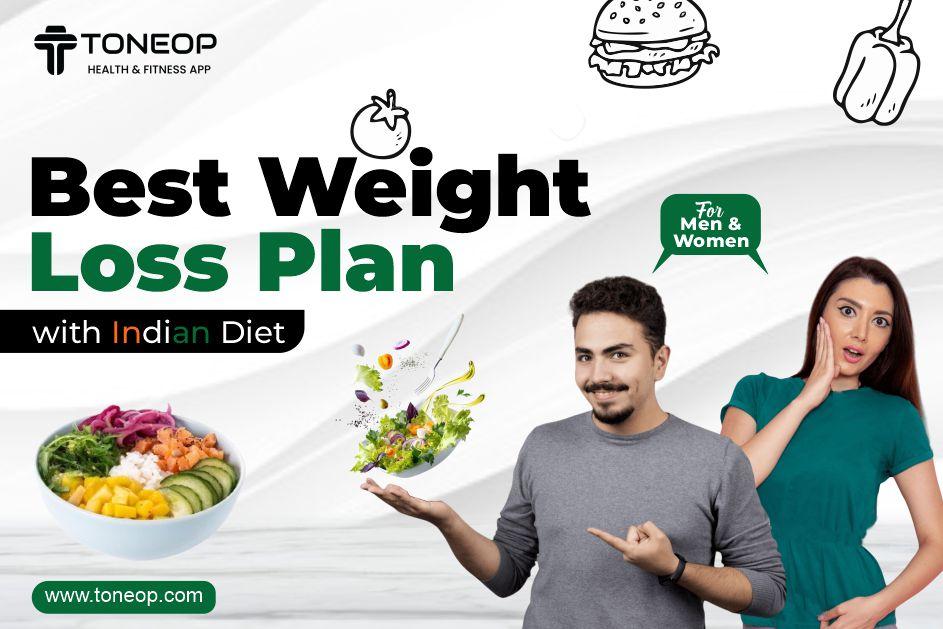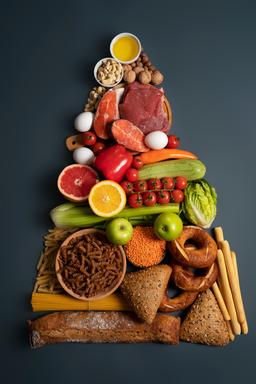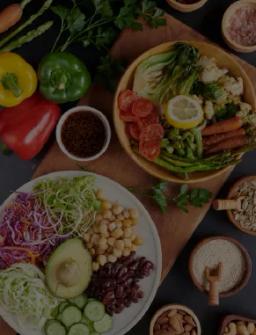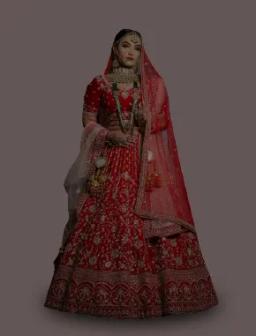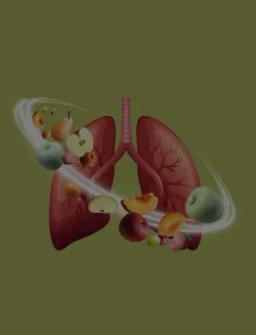Top 12 Effective Strategies For Portion Control To Lose Weight
Weight Loss
Published on: 20-Nov-2023
10 min read
Updated on : 23-Nov-2023
877 views
Shrabani Pattnaik
Top 12 Effective Strategies For Portion Control To Lose Weight
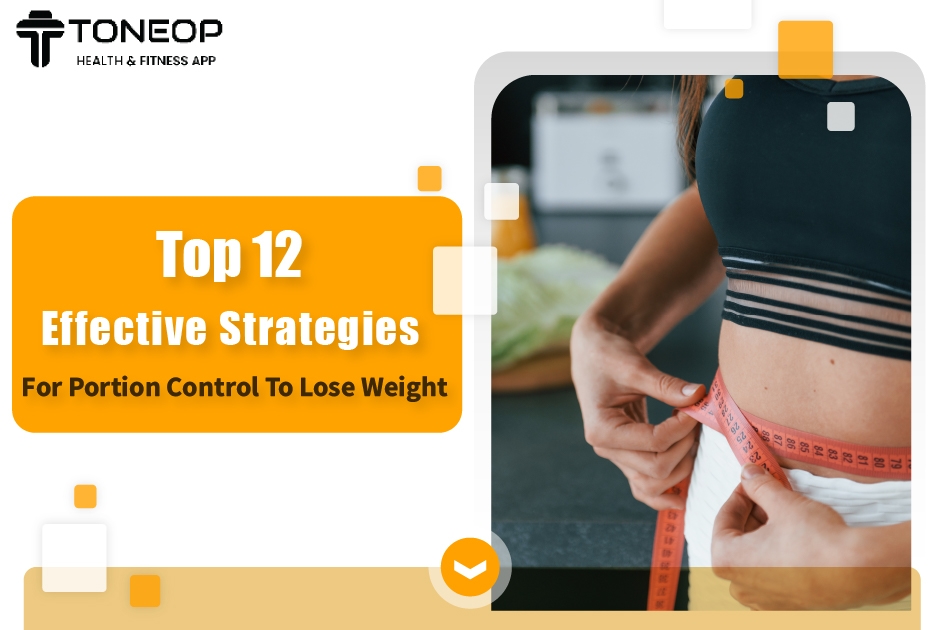
share on
Greetings, readers! Have you ever heard of losing weight by managing the size of food you eat? Portion control is all about that! It is the technique of paying attention to how much food you eat while taking into account its nutritional worth and your dietary goals.
Portion control diet has become very popular among fitness enthusiasts and is beginner-friendly. Many successful weight loss journeys emphasise the importance of portion control for achieving the desired weight.
If you are embarking on a weight loss journey, this guide is exactly what you need. Understanding portion control is the first step in developing good eating habits, which greatly increases your chances of attaining your health goals.
This article will discuss some of the most effective strategies for portion control to lose weight that you can include in your weight loss plans. So, read on!
Table of Contents
What Is A Portion Control Diet for Weight Loss?
12 Effective Strategies for Portion Control
The Role of Portion Control in Weight Loss
Portion Control Vs. Serving Size
The Final Say
FAQs
References
What Is Portion Control Diet?
A portion control diet is a strategy that aims to manage and restrict how much food you eat at meals and snacks. The ultimate objective is to establish a calorie deficit, where your calorie intake is lower than your calorie expenditure, thus encouraging weight reduction. A dependable and one of the most significant weight loss strategies is portion management.
Your attempts to lose those extra pounds might easily be sabotaged by larger or uncontrolled meal sizes. Individuals often underestimate portion control's impact on losing weight, assuming all foods are equal. It happens frequently that you put more food on your plate than you meant.
That is why portion control is a successful and preferred method of weight loss. It gives you the power to develop a nutrient-dense eating habit by educating you on how various foods impact your satiety and general well-being.
You can create a more well-rounded and long-lasting strategy for weight management by changing your portion sizes in light of these ideas.
Top 12 Effective Strategies For Portion Control To Lose Weight
Here are 12 doable tactics to assist you in mastering portion control for weight management:
1. Read All Of The Nutrition Labels
Serving sizes can be learned a lot from nutrition labels. Understanding these labels enables you to choose a suitable serving size for yourself, even if everyone's nutritional requirements may differ.
For example, suppose a cereal label indicates a serving size of 1 cup. Use measuring cups to pour exactly one cup, as this will allow you to visualise the quantity of cereal you want to consume. Another example is to compare the serving sizes of two yoghurt containers. If one suggests a smaller serving, it might be a better fit for your dietary needs.
Hence, reading the nutrition labels will help you with a tangible and visible representation of the serving size. It helps you become familiar with what the recommended portion looks like in reality.
2. Measure Your Food
When preparing meals at home, use measuring spoons and scales. A standard set of spoons, such as teaspoons or tablespoons, will give me precise measurements for spices or condiments, while a long base spoon will help you with the serving amount.
Scales such as a digital scale can help you weigh the amount of nutrients you are eating. For example, you can weigh chicken breast and be informed regarding how many grams of protein you will acquire from it. Additionally, there are portion control plates with built-in scales, which combine a plate with portion control divisions and an integrated scale, offering a visual guide to healthy portion sizes.
Measuring your meals precisely helps you become more aware of proper portion sizes and discourages overindulgence. They also promote heightened awareness, helping to adhere to recommended serving sizes.
3. Plan Meals in Advance
Structure meals with a mix of protein, healthy fats, and fibre-rich foods in advance. You can either do it with the help of a food diary or take support of health apps. Planning in advance will allow you to manage your portions beforehand.
For example, you have targeted to eat 1800 calories a day. How can you distribute this? Divide the calories according to different time schedules so that not only will you eat adequate portions with control but also prevent overeating.
4. Calculate Your Macros
When practising portion control, it is critical to have a thorough awareness of your body's nutritional needs. Macros, short for macronutrients, are the 3 main nutrients– proteins, carbohydrates, and fats– that provide energy to the body, develop tissues and take part in various metabolic processes.
Although it could take some time and effort, calculating macros is an important procedure for obtaining your ideal weight and is one of the best portion control to maintain weight strategies.
To calculate how many grams of macros you need per day, you need to calculate the total calories you are going to consume. But for best results, you must maintain the following split of the macros:
40% protein
30% carbohydrates
30% fat
For example, if you are targeting 1800 calories a day, keep it as:
1800 X 0.4 = 180g Proteins
1800 X 0.3 = 540/4 = 135g Fats
1800 X 0.3 = 540/9 = 60g Carbohydrates
Also Read: How Counting Calories Can Benefit Your Health? Top 5 Calorie Counter Apps
5. Prioritise Vegetables
Give veggies top priority by including them in all of your meals. They do not just offer vital nutrients; they also help you feel full without consuming a lot of calories. This enables you to divide your portions amongst different food groups more effectively. Make sure to add cauliflower, cabbage, lettuce, spinach, root vegetables, broccoli, zucchini, bell peppers, etc.
6. Include Accompaniments
Begin your meal with a serving of veggies, chicken, or plant-based protein before devouring carbohydrate-rich meals like rice or bread. This strategy offers necessary nutrients and reduces calorie intake, especially when eating foods high in carbohydrates.
7. Use Colour Contrasting Plates
Your choice of dinnerware can impact your eating habits. Research shows that using colour-contrasting plates can help control portion sizes. Opt for plates contrasting to your meal's colour to eat less, or choose the same-coloured dish to encourage more consumption of specific foods, such as vibrant green vegetables, on a matching plate.
8. Recognize Visual Cues
Use visual cues to educate yourself on what appropriate portion sizes entail. For instance, the size of a portion of meat should be comparable to a deck of cards, that of a cup of cooked pasta to that of a tennis ball, and that of a teaspoon of peanut butter to that of your thumb. When measurement instruments are inaccessible, you might use these cues to estimate portion sizes.
9. Reduce Carbs Intake
Reduce your intake of carbohydrates in favour of more proteins or dairy products like paneer or dahi if you are seeking to lose weight or gain energy. To help you feel full without consuming too many calories, include a serving of bean salad or hummus.
10. Use Smaller Dishes
When presenting your meals, choose smaller dishes and bowls. While still limiting the amount of food you eat, this optical illusion can give your servings the appearance of being larger. Additionally, eating more slowly and paying closer attention to portion sizes can result from utilising smaller utensils.
11. Drink water Before Meals
Water consumption before meals might help with portion control and hasten weight loss. A glass of water before a meal will help you eat the right amount because dehydration can cause overeating. If you want to feel filled sooner after eating when hunger strikes, consider waiting 30 minutes after having a glass of water.
12. Eat Consciously
It can be challenging at first, but slowing down your eating is an essential component of portion control. You will feel fuller before you finish your food if you take your time enjoying it, which will prevent you from overeating.
The Role Of Portion Control In Weight Loss
Now, let’s understand the importance and role of portion control in weight loss:
Prevents Overeating: It helps prevent overindulging in meals and unhealthy snacking.
Maintains Calorie Balance: Controlling portion sizes ensures a balance between the calories consumed and expended, which is essentially a fundamental aspect of weight management.
Teaches Mindful Eating: Portion control promotes mindful eating habits, fostering a greater awareness of hunger and satiety cues. Instead of banning certain food groups, portion control focuses on regulating how much food you eat.
Facilitates Sustainable Habits: By avoiding extreme dietary restrictions, portion control encourages sustainable and realistic eating habits for long-term weight maintenance.
Supports Nutrient Intake: Following recommended serving sizes ensures a more balanced intake of essential nutrients, both macro and micronutrients.
Prevents Plateauing: Consistent portion control can help prevent weight loss plateaus by maintaining a steady, manageable reduction in calorie intake.
Also Read: A Clean Eating Plan For Weight Loss
Portion Control VS Serving Size
Both portion control and serving size are essential to maintain health. So, let us understand the major differences between them:
The Final Say
Portion control diet is a potent and successful weight loss technique. You can try to go for portion control to lose weight as it’s relatively easy to follow, and with the use of the best portion control containers for weight loss, you can see visible results.
Portion control is not about deprivation but about making informed decisions for a healthier lifestyle. However, several variables are important to consider, including the nutritional content and quality of the food you eat and the integration of regular physical activity into your daily routine.
FAQs
1. Can you lose weight by controlling your portion sizes?
Research has repeatedly demonstrated that people tend to eat more when given larger amounts. Portion management is a great method when trying to lose weight and keep it off in the long run. A serving is a standard measurement of food, whereas a portion is the amount of food you put on your plate.
2. Does eating less cause weight loss?
A key element of weight loss is consuming fewer calories. But by including regular exercise in your routine, you can burn more calories, making your weight reduction journey more fruitful and healthy.
3. What are fat-burning foods?
Foods that burn fat include things like oily fish, eggs, and almonds. These foods may help people lose weight by increasing metabolism, lowering appetite, or consuming fewer calories overall.
References
About ToneOp
ToneOp is a platform dedicated to improving and maintaining good health through a comprehensive range of goal-oriented health plans with up to 3 Coach support. With a range of Weight Management, Medical Condition, and Detox Plans, the app also provides premium health trackers, recipes, and health content. Get customised diet, fitness, naturopathy & yoga plans and transform yourself with ToneOp.
Subscribe to Toneop Newsletter
Simply enter your email address below and get ready to embark on a path to vibrant well-being. Together, let's create a healthier and happier you!
Download our app
Comments (0)
Leave a reply
Your email address will not be published. Required fields are marked *
